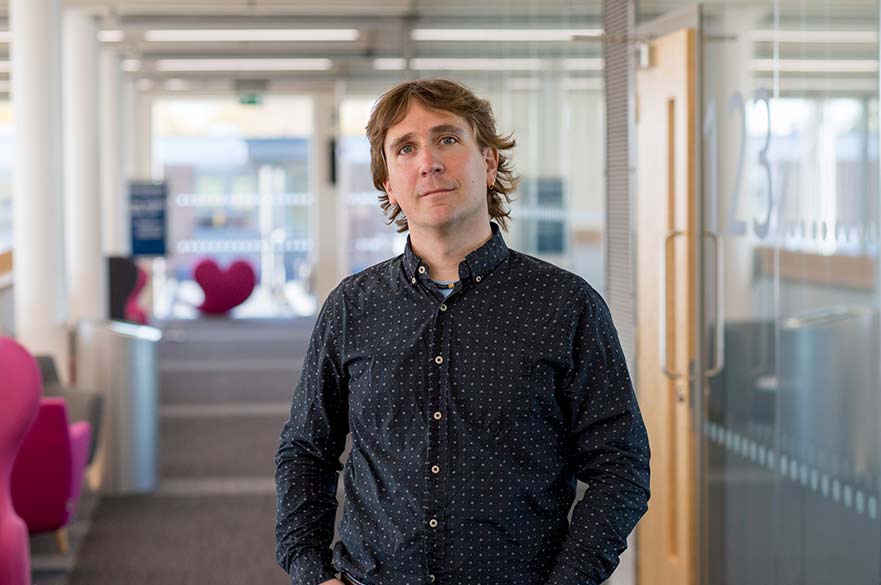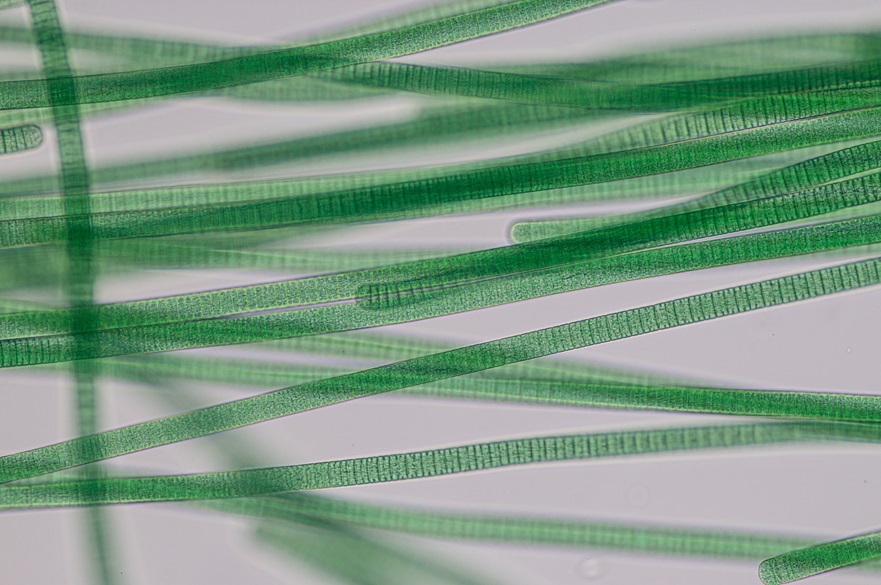Role
Lucas leads an experimental research group that studies pattern formation and complex fluids. He is also currently teaching condensed matter physics, image processing for forensic students and the first-year physics lab course. He has previously taught courses in environmental physics, non-linear dynamics, mechanics, soft matter physics, and the history of physics.
Career overview
Prior to joining the faculty at NTU, Lucas was a research group leader at the Max Planck Institute for Dynamics and Self-Organisation. During this time, he taught at the University of Göttingen, where he also habilitated. He obtained his PhD from the University of Toronto for his work on columnar joints, like those of the Giant’s Causeway, and was a post-doctoral fellow at the University of Cambridge, where he studied how colloids, such as mud or paint, dry and crack.
Research areas
Along with his research group, Lucas studies complex fluids and complex solids – materials that consist of more than one phase of matter, mixed together. This covers a diverse range of topics and questions, but is generally held together by a few simple themes:
- connecting the microscopic structure of such materials to their macroscopic properties,
- understanding mechanical instabilities (e.g. fractures, wrinkling), and
- applying these results in a broad, interdisciplinary way (e.g. polymer films to reptile scales or fossil biofilms; mud cracks to Martian permafrost).
Basically, this research asks the question: Why is the universe not boring? Or, why is there so much structure, order, and pattern to life and nature, rather than a flat featureless expanse? In response, his work has focused on using the tools of solid mechanics, pattern formation, and the physics of complex systems, to form bridges between controlling what happens on one length scale, and creating a response on another scale (or interpreting how a response happened). Some examples include:
- wrinkling of curved sheets – how does geometry control shape?
- porous media flows, studied with microfluidic techniques.
- geophysical patterns, like salt polygons, patterned ground, or columnar joints.
- Fracture patterns, such as desiccation, biogenic or hydraulic cracks.
- Colloidal dispersions, for example the dynamics of drying paint.
Opportunities arise to carry out postgraduate research towards an MPhil / PhD in the areas identified above. Further information may be obtained on the NTU Research Degrees website: https://www.ntu.ac.uk/research/research-degrees-at-ntu
External activity
- Editorial Board Member, Proceedings of the Royal Society, Series A
- Affiliated member, Max Planck Institute for Dynamics and Self-Organization, Göttingen
Sponsors and collaborators
Major active collaborators include:
- Bernard Cabane, ESPCI ParisTech (dynamics of colloids, x-ray scattering)
- Ran Holtzman, Hebrew University of Jerusalem (porous media flows)
- Eleni Katifori, University of Pennsylvania (elasticity of curved sheets)
- Karen Alim & Stefan Karpitschka, Max Planck Institute for Dynamics and Self-Organisation (biophysics)
Publications
Books
Desiccation Cracks and their Patterns. Formation and Modeling in Science and Nature. Goehring L, Tarafdar S, Dutta S, Kitsunezaki S, and Nakahara A, Wiley, 2015
Research papers
The smectic order of wrinkles. Aharoni H, Todorova DV, Albarran O, Goehring L Kamien RD, and Katifori E, Nature Communications, 2017, 8, 15809.
Self-assembly from polydisperse suspensions. Cabane B, Li J, Artzner F, Botet R, Labbez C, Bareigts G, Sztucki M and Goehring L, Physical Review Letters, 2016, 116, 208001
P. Kiatkirakajorn and L. Goehring, Formation of shear-bands in drying colloidal dispersions. Kiatkirakajorn P and Goehring L, Physical Review Letters, 2015, 115, 088302
Structural anisotropy of directionally dried colloids. Boulogne F, Pauchard L, Giorgiutti-Dauphiné F, Botet R, Schweins R, Sztucki M, Li J, Cabane B and Goehring L, EPL (Europhysics Letters), 2014, 105, 38005
Plasticity and Fracture in drying colloidal films. Goehring L, Clegg WJ and Routh AF, Physical Review Letters, 2013, 110, 024301
Nonequilibrium scale selection mechanism for columnar jointing. Goehring L, Mahadevan L, and Morris SW, Proceedings of the National Academy of Science, 2009, 106 (2), 387-392
Reviews/Popular science
Cracking mud, freezing dirt, and sculpting rocks. Goehring L and Morris SW, Physics Today, 2014, 67 (11), 39-44
Drying colloidal systems: laboratory models for a wide range of applications. Bacchin P et al., The European Physical Journal E, 2018, 41, 94
Press expertise
- Geophysical patterns (columnar joints, polygonal terrain, etc.)
- Fracture
- Complex fluids (colloids, emulsions, polymers)
- Pattern formation
- Non-linear dynamics
- Multi-phase flows

